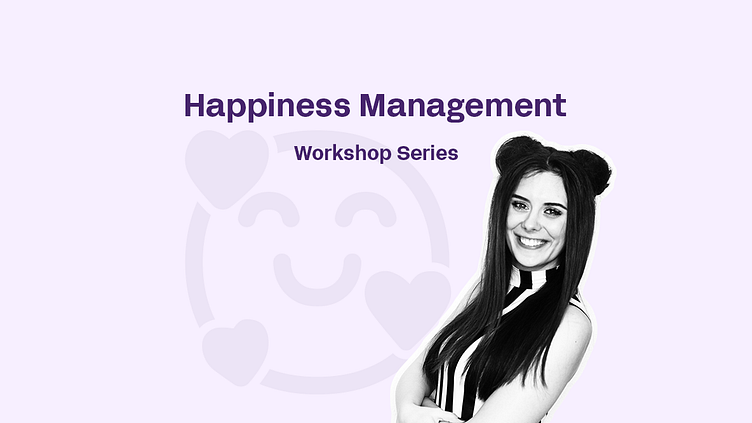Happiness Management
One of my most cherished projects was the Happiness Management workshop series that I developed during my last position. I believe this is what people remember me for most in the company.
The Happiness Management Workshop series is a concept I developed with the help of psychologists, coaches, Scrum masters, books, and a lot of empathy.
I initially started it with the design team I led. After two months, I was asked to expand it to the entire product development team, including designers, project managers, developers, and more. Eventually, it became so popular that the boss allowed everyone in the company to participate. Statistically, I can say that laughter was a constant feature, and overall satisfaction increased by an average of 20%.
In the following section, I describe the framework on which the series is built.
1. The Interviews (the basis)
In the very first meeting, I scheduled interviews with each team member. Every participant had 12 minutes to answer individual questions that I had prepared, with 3 minutes allocated for changing seats. I created an open and non-judgmental space where employees felt comfortable discussing their perceptions of the company, their roles and positions, collaboration with colleagues and different departments, and their overall satisfaction.
These interviews formed the basis of the workshop series, as my colleagues defined their own needs, which I then used to shape the subsequent workshops.
After conducting all the interviews, I quantitatively analyzed the responses and presented the participants with the five main issues that were generally concerning them.
Because they felt heard and had a hand in selecting the topics, there was a strong motivation to participate in the workshops.
Notably, there were no sick leaves recorded on the days of the Happiness Management Workshops—though this could be purely coincidental.
2. The Topics
Here are some of the topics I conducted workshops on based on the last round of interviews:
Communication
Appreciation
Team Building
Each topic was dedicated to a full workshop day. I aimed to keep the participants as engaged and entertained as possible during these sessions. To ensure their overall satisfaction, I adhered to the following principles:
Autonomy: No one was required to present or perform any task they were uncomfortable with.
Breaks: At the beginning, participants could plan the timing and length of their longer breaks, while shorter breaks were scheduled and taken as needed.
Gamification: Just like in apps, we incorporated playful elements into the workshops to train competencies in an engaging way.
Transparency: I always explained the purpose behind each activity.
Continuous Learning: Every workshop aimed to impart new knowledge, adding value while keeping direct instruction to a minimum.
Time Management and Expectation Setting: Workshops can be exhausting, so I strictly adhered to the planned schedule to avoid overrun.
Tasks: During group activities and individual interviews, there were always tasks available for everyone.
Media Change: When a few minutes of direct instruction were necessary, I interspersed digital check-ins where all participants actively engaged.
I took various circumstances into account, such as the weather, to enhance the workshop experience. For example, during a summer special, I organized a non-alcoholic refreshment station where participants could create their own mocktails with a variety of ingredients. I believe that autonomy is a significant component of overall satisfaction.
A few tools I utilized, which were also available for all participants, included:
Warm-ups and Energizers
Mobile Apps
Comics
By integrating these elements, I was able to create a dynamic and supportive environment that not only addressed the key concerns of my colleagues but also fostered a culture of continuous improvement and engagement.
Do you want to increase your company's satisfaction too? Let's create a happier, more engaged workplace together.
Hire me. (recommended)
Cheers, your future Happiness Manager 🥂





